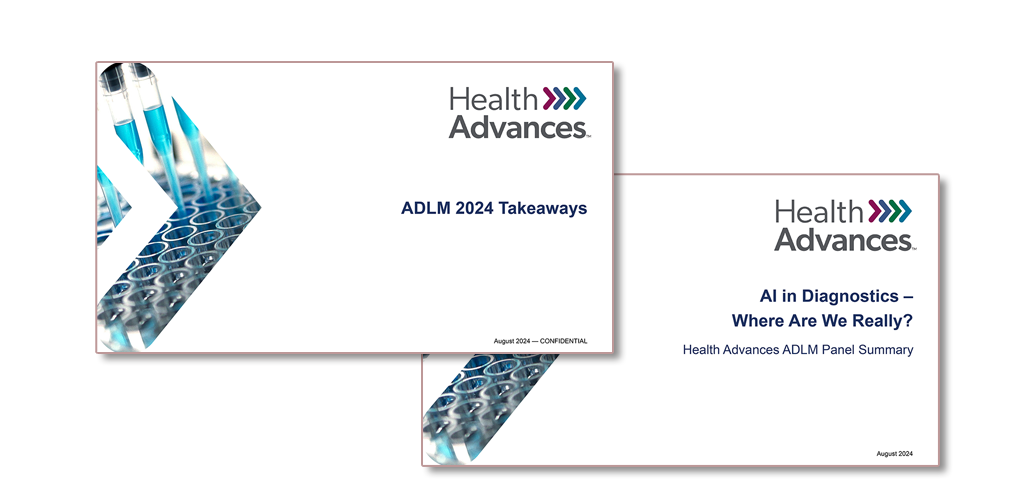Business Development Strategy
Effective BD requires a strategy to prioritize growth opportunities that leverage right-to-win, fit strategically, and optimize the value of your portfolio.
How We Help
We develop business development strategies to achieve larger M&A and strategic growth goals.
We partner with you to:
- Leverage voice of customer and deep market intel to assess your current position, now and in the future state
- Align on corporate and M&A objectives to position for the future
- Conduct white space analysis to creatively identify strategic growth initiatives and adjacent opportunities
- Surface insights and best practices from analog company market experiences
- Systematically identify and prioritize opportunities most likely to drive ROI
- Conduct buy- and sell-side due diligence to make critical investment decisions
Impact
- Holistic approach uncovers previously unseen growth opportunities - our consultants bring unique depth that spans biopharma, medtech, diagnostics, and digital health. From this strategic vantage point, we identify the best internal and external opportunities to gain commercial advantage in growing cross-sector areas such as precision medicine, drug delivery, and digital therapeutics.
- Trusted diligence partner brings confidence - we are uniquely positioned to execute rigorously quantified diligence assessments across sectors with a stellar reputation and investor network, cutting edge insights, and deep ties to the strategy.
- Cross-functional alignment drives success - effective BD is cross-functional - to formulate the strategy, execute a transaction, and implement and integrate a deal. We build alignment across commercial, R&D, and other functions early to avoid failed initiatives and enable execution of deals that will add value in the real world.
A mid-sized biopharma with a Phase I oncology asset approached Health Advances to develop a systematic approach for identifying combination partners. The analysis required an understanding of which targets and assets had strong mechanistic support and which companies could be suitable co-development partners. We identified and segmented the opportunities using scientific, clinical, and business rationale. These opportunities were prioritized using an algorithm that evaluated the competitive landscape, the scientific and clinical evidence to date, company-specific features, and several client-specific factors. We built alignment on the top combination partnership opportunities over a series of cross-functional workshops with the client's strategic committees. This work was used to prioritize the next steps for developing the asset.
A large investor engaged Health Advances to develop an investment strategy for the biotechnology industry. Our team analyzed the landscape of five notable biologic modalities - protein/antibodies, nucleic acid therapies, vaccines, gene therapies, and cell therapies - to prioritize a short-list of the most attractive areas for investment. We characterized the key risks, including scientific/technical and manufacturing; commercial opportunity, including the disruptive potential of the technology and historical/forecasted growth; critical success factors; and financing landscape and investment opportunities. The analysis allowed our client to prioritize the top three most attractive areas for investment.
A biopharmaceutical company engaged Health Advances to educate internal stakeholders on the US markets for medical devices, in vitro diagnostics and precision medicine approaches. Health Advances compiled in-depth primers that encompassed market background, regulatory requirements, market access considerations and trends, and segment overviews. Segment overviews introduced key segments in each market by product type and provided salient comparisons across segments in terms of strategic considerations such as salesforce needs and gross margins. Separately, Health Advances performed an initial screening of potential device and diagnostic products with clinical adjacencies to the client's existing biopharmaceutical portfolio. Strategic commercial considerations for mixed-bag product portfolios were also outlined. Ultimately, both the primers and product catalogs prepared the client to pursue and prioritize strategic partnerships and acquisitions within markets that were previously unfamiliar to internal stakeholders.
Our team was engaged to assist in the identification and prioritization of acquisition targets for a mid-sized diagnostics company. After working collaboratively to develop prioritization criteria on which to evaluate potential targets, a small subset of companies were recommended for further evaluation. The team engaged in extensive secondary research as well as primary research to develop detailed company profiles that provided our client with relevant target company details and preliminary recommendations regarding acquisition strategy priorities.
Health Advances assisted one of the world's largest information technology companies in exploring a range of opportunities in diagnostics to revolutionize healthcare, and then determining an optimal strategy to enter the most attractive markets. Through in-depth primary and secondary research, the timeline and financial implications of various diagnostic investment opportunities (e.g., novel point-of-care and patient self-testing) were determined for multiple geographies. After prioritizing the opportunities, a comprehensive market entry roadmap was developed to ensure appropriate investment was made into specific technologies and diagnostic menu areas to optimize early wins, while ensuring longer-term leadership in the market.
A leading diagnostic manufacturer wanted to identify and evaluate potential BD targets in the obstetrics space to complement its current portfolio. Through interviews with clinicians in the US, 5EU, and Australia, our team first performed a landscape assessment to understand current testing paradigms, evaluate unmet needs, and identify emerging companies. We then prioritized these companies and performed detailed research on the most promising targets. Our resulting recommendations motivated our client to pursue discussions with the management of the identified companies.
A market leader in lab analytical tools and automation was exploring opportunities to invest in sample preparation automation, and asked Health Advances to evaluate potential target companies. Our team first evaluated several end markets to identify attractive segments that have the most potential and opportunities. By talking to directors and division heads of biopharma and CDMOs, we narrowed down to the top three most attractive markets and relevant innovative tools that aid sample preparation automation. Finally, our team profiled over 30 potential targets and recommended the top 10 to our client based on customer needs, technical differentiation, and strategic fit.
A large bioprocessing contract development and manufacturing organization engaged Health Advances to evaluate the current performance of its growing protein therapy development business. In partnership with the client, the team developed a detailed interview guide to probe service provider awareness, selection process, perceptions of the client against its key competitors, and opportunities for the client. The team then recruited and interviewed over 50 hand-selected bioprocessing industry experts across a range of established and emerging biopharma companies and geographies (US, Europe, Asia) with vendor decision-making responsibility. The resulting final report gave the client a customer-centric assessment of its current business performance and clear strategies to grow its business moving forward.
A company with a novel drug delivery technology asked Health Advances to help develop a deal negotiation framework to aid in navigating early conversations with potential partners. Our team examined over 500 deals to establish a framework of common deal terms and potential levers that can modulate deal value. The team gained additional color and context around strategic considerations and negotiation approaches through focused interviews with executives at top pharmaceutical and technology companies. Our resulting deliverable aided the client in developing a strategic timeline for partnership and an approach to negotiating the most valuable licensing deal.
The business development team of a medical device company was looking to enter a new market and needed support to develop the optimal strategy and articulate the M&A strategy to senior management in order to pursue new acquisitions and partnerships. The team leveraged the client’s existing fact base by conducting internal stakeholder interviews with client subject matter experts and synthesizing existing client materials. For each market segment, the team assessed the competitive landscape, penetration of current therapies, and overall market size as a component of assessing various strategic M&A options. The strategic implications, including potential synergies formed by combining various product types, were considered across several strategies for market entry with our team providing an ultimate recommendation. With a clear strategy in place, the client’s business development team used the work to prioritize and justify expanding M&A activity in the target market.
Health Advances worked with a large, regionally-focused multispecialty provider group in order to identify programs and services that could be offered directly to self-insured employers. Our team assessed the competitive landscape of add-on health and wellness benefits, conducted phone interviews and a survey with self-insured employers, and evaluated the landscape of employers in the region to identify and prioritize a list of opportunities. Our client pursued the top two to three identified opportunities in order to build relationships and defend patient volumes for large employers in the region.
A biotechnology company needed a digital health strategy as it prepared to launch a novel therapeutic in the cardiovascular market. Our team identified and evaluated potential digital health applications and partnerships across the patient journey, and then collaboratively defined the most attractive opportunities through interactive strategy sessions. The project culminated in a roadmap with compelling rationale on the prioritized digital opportunities and recommendations on promising partners.











